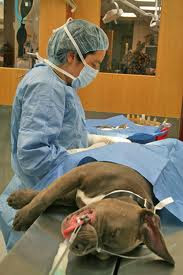Lets start with a trap-neuter-return program where people's endeavors are geared toward lowering the number of these cats by trapping them in humane cages, taking them to vets and places like Cat Action to have them neutered and spayed. You may know it as trap-neuter-spay-return or trap-neuter-vaccinate-return; all are endorsed by the ASPCA, SPCA, the Humane Society and Cat Action, here on Prince Edward Island, Canada.
According to web site of the American Association of Feline Practitioners, stray and feral cats are “humanely trapped, examined, vaccinated, and surgically sterilized by veterinarians.” This is the same here in Canada. After being fixed and shots given, feral cats are freed and returned to their familiar environment and hopefully, cared for by volunteers who provide food, shelter and monitor them for sickness. I know there is an actual House on PEI where a couple, through the aid of people like me, provide shelter, medicine when needed, food and water for them.
The advantages obviously include:
- Benefits for feral, stray and abandoned cats. Neutered and spayed cats sometimes gain weight and have fewer health problems like breast, testicular and uterine cancers. I have four fixed cats of my own, only one female has gained weight. Spaying also reduces risks that coincide with constant pregnancy. Fewer females in heat means fewer toms attracted to an area so fewer, potentially harm-causing cat fights.
- Benefits for people. Spaying and neutering these cats is an excellent population control where behaviors that include fighting and marking are also reduced, while benefits such as rodent control continue. Ultimately less cat suffering also means less human suffering in the face of dying or injured cats.
 |
| A feral cat on Ellsworth Street investigates a trap; the cat eventually was attracted by the food inside and was caught |
 |
| Trapped cat looks out from the a transfer cage |
Relocation is unappealing for other reasons too; cats, like raccoons, are very territorial so a relocated cat just might attempt to find its way home and suffer an accident, life-threatening injury or death on the way. Then again, the relocation area itself might already have an established colony that will fight for its right to not allow new cats in or it may lack proper food, water and enough sheltered areas for all of them. These are animals that migrate from colony to colony or house to house. Unless a colony’s life is in danger from something like sickness or overcrowding most experts agree that relocation is not a permanent solution.
 |
| Dogs are just as vulnerable and group together in packs when feral. Fixing, taming and re-homing works for them too |
Most people are humane and not willing to support eradication. With a trap-neuter-return effort, “people will give their time, money, and resources,” says Slater, author of Community Approaches to Feral Cats. “But if you’re catching and euthanizing cats, in most cases you just won’t get volunteers to do that.”
TNR is an excellent teaching tool for people because it gets us more involved and doing something about the situation. “It gets people to think about how we can prevent cats from ending up on the street and how we can manage cat populations.” When we and our children are pro-active, everyone wins. I am referencing this information from pets.webmd.com.
My next blog will be concerning some things that you may be able to do for the cats in your area. The site where the pictures came from is http://www.telegram.com
Catspaw




No comments:
Post a Comment
Hi and thanks for visiting my blog. I am very grateful for your comment and please leave a link.